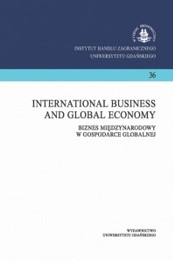Safety of investing in Polish cooperative bonds – risk aspect
Safety of investing in Polish cooperative bonds – risk aspect
Author(s): Jacek PeraSubject(s): National Economy, Business Economy / Management, Present Times (2010 - today), Financial Markets
Published by: Wydawnictwo Uniwersytetu Jagiellońskiego
Keywords: bonds; risk; securities; cooperative bank; security;
Summary/Abstract: This paper analyses the safety of investing in Polish cooperative banks’ bonds in the aspect of risk. The main purpose of the paper is to identify and analyze the risk resulting from Polish cooperative banks’ issuing bonds. The paper assumes the following research hypothesis: investments in cooperative bonds are relatively safe. As a rule, cooperative banks issue bonds in pursuing their business defined in the articles of association (development of lending activity), investing in branch network or innovative technological solutions, restructuring/diversifying financing sources, restructuring maturity structure for liabilities, restructuring liability revaluation dates, or increasing regulatory capital. The analysis covered all Polish cooperative bonds issued in 2018 and maturing in 2026, i.e. all 24 bond issues performed by 20 cooperative banks. The research identified general risks applicable to all cooperative bonds, as well as risks specific to each of the 24 bond issues analysed. Based on the classification, the cooperative bonds were divided by type into eight groups. The author adopted the method of critical analysis of literature. The modified Fisher–Weil model, risk classification on the Stanisz scale, and selected risk indicators were also used in the evaluation of the bonds. For his analysis, the author drew data from full-year, half-year, and current reports found on the Catalyst and NBP websites. The security of cooperative bonds was analyzed for D(average duration), V(convexity), and the risk indicator ID (issuer’s debt). The analysis revealed that investments in the bonds analyzed are relatively secure. The accepted research hypothesis was therefore verified positively against these parameters. A high level of risk has been identified for the PID (profitability against the issuer’s debt) indicator. Here, the research hypothesis was verified negatively.
Journal: International Business and Global Economy
- Issue Year: 39/2019
- Issue No: 1
- Page Range: 78-104
- Page Count: 27
- Language: English

